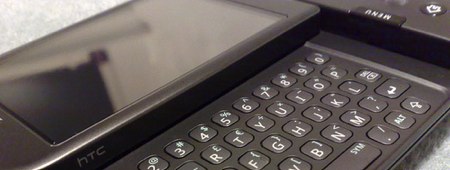Acrylic tumbler lock

Sometimes describing how a lock actually works can be the hardest part of teaching someone about lockpicking. [Mike Gee] has designed an acrylic lock that may just be the ticket for these situations. All of the pieces are cut from clear acrylic. As you insert the key, you can see it raise the four pins up to the shear line. He says that it will definitely take some tweaking as you assemble it to get it to function smoothly. Embedded below is a video of the lock in use. You can find plans on Thingiverse.
[Thanks, cnelson]

Multitouch pinball instrument
This is an interesting twist on multi touch input. [s9lucas] is using a simple multitouch system as an instrument that uses solenoids and pinballs to make music. He has taken the basic multitouch tutorial and combined it with an Arduino bell tower. The end result is possibly more fun to watch than it is to listen to, but that’s fine.

SwiitBoard: high impact Wii balance board

[Frits] sent us the SwiitBoard, an improvised version of the Wii balance board. He wanted to be able to do something a little higher impact than he could on the Wii balance board, and required more space to do it in too. Using two different kinds of foam and a piece of plywood, he put together the SwiitBoard. We’re not completely clear on how he is handling direction control. He states that it is derived from gforce.x. Can anyone clarify? Stay tuned after the break for a video of his demo software.

22″ Binocular telescope

This is the worlds largest known visual binocular. Why binocular and not just a regular telescope? Well, it all has to do with clarity. Apparently when you can use both eyes, you can see much more detail and pick up light better. The author states in one story that he was able to see a spiral galaxy clearly with a binocular telescope, but couldn’t see it at all with a monocular telescope of the same power.
There is information on several models on the site. Look in the right hand column as well for useful links to parts distributors.
[via Hacked Gadgets]

Genetic programming

[Ron Alsing] wanted to try out some genetic programming, so he created a simple test problem: Could you render the Mona Lisa using just 50 semitransparent polygons? The program starts with a random DNA sequence. It then mutates and compares itself to the original image. If the mutation is closer, it becomes the new sequence. The final image he shows looks pretty good after 904,314 iterations.
[prunesquallor] pointed out a genetic algorithm project of his own. It’s a flash program to evolve a car. The car tries to get as far as possible on a set terrain without the passenger circles hitting the ground. The wheel size and positions can change along with the spring length, constant, and damping. A graph tracks the best performance along with the mean. He’s planning on building a version that lets you change the parameters.
[via Waxy]

Simple laser projector

[kap4001] built what has to be the simplest laser scanner possible. It’s two servos strapped together with zip ties plus a 5V laser module. They’re connected to a Pololu serial servo controller. The laser is pulsed by switching the DTR line. You could use it to draw images like the one above… except that’s an 85 second exposure.

Hardware-unlocked Android G1 for sale

Google has new program to sell Android phones directly to developers. The Android Dev Phone 1 is both SIM-unlocked and hardware-unlocked. SIM-unlocked means you can use it on any GSM carrier you want. Hardware-unlocked means you can run any system you want on the phone, not just officially signed ones. No more need to worry about security patches taking away your root access.
The device is $399. You will need to purchase it through the Android Market as a registered developer (a $25 fee). We wonder how long before the unsigned bootloader starts getting flashed to T-Mobile phones.
Two new Android phones have surfaced recently which may prove just as friendly: the Kogan Agora Pro and the QiGi i6.
UPDATE: While shipping is free in US, it is incredibly expensive everywhere else. Yes, we bought one.
[via Techmeme]
[photo: tnkgrl]

You received this email because you are subscribed to the real_time feed for http://hackaday.com/feed/. To change your subscription settings, please log into RSSFWD.

